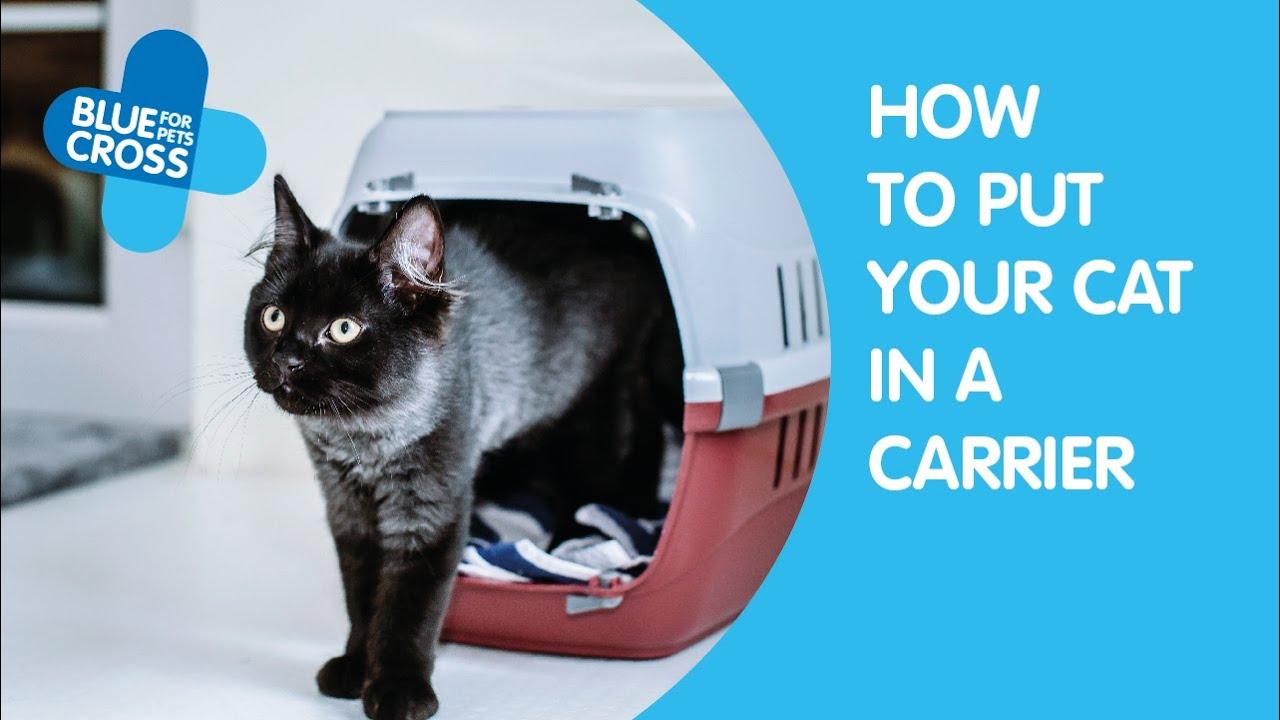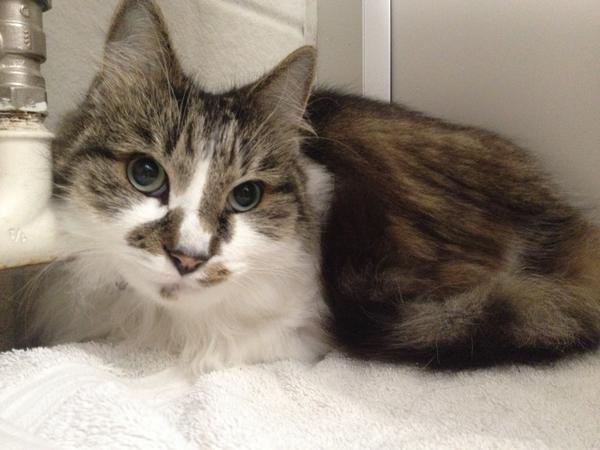How to put your cat into a carrier
Ever had the challenge of getting your cat into a carrier? Most owners dread this part when they have a trip to the vet planned.
Luckily, there are a few things you can do to make life a little easier.
The best cat carrier
Ideally your carrier will be one that comes apart, with the top half able to be removed from the bottom. The advantage of using this type of carrier is that if your cat is nervous, you can unclip the top half of the carrier and either lift the cat out gently, or allow the vet to examine them while they remain in the bottom half.
This makes it easier and less stressful for both you and your cat - attempting to hold and pull your cat through the entrance is likely to be scary for them, and they may become defensive.
Tip
Avoid clipping the top of the carrier on when your cat is in it. This could scare them and make them more nervous around their carrier. If it’s possible, gently lift them out and reassemble the carrier away from your cat – they are very likely to re-enter the carrier willingly this way.
Carrier size
Firstly, make sure you have the right size carrier for your cat so they have the space they need to turn around inside. A carrier that comes apart is the best option.
Familiarising your cat with a carrier
If you have already tried to put your cat into a carrier and they've been scared or nervous while doing it, they will sometimes release stress hormones. Cleaning the carrier with a biological solution first, before rinsing and letting it air dry will remove these so that you can start the training process on the right paw. This needs to be repeated after a visit to the vet to remove any unfamiliar smells.
- Set up the carrier with the lid off in your cat's favourite room where they like to relax
- Spray with a pheromone spray, like Feliway
- Put a familiar blanket that smells of them into the base, this comforts as well as stops them from sliding
- Pop some treats in the carrier every day until your cat is happy to go into the carrier by themselves
- Place the top of the carrier on, making sure your cat is not in the bottom half when you do so, and repeat the above steps. Leave the door open at all times.
- Once your cat is happy being in the carrier with the top on, you can begin shutting the door for a few seconds at a time, rewarding your cat for calm behaviour. Increase this time daily until your cat can be in the carrier with the door closed for a few minutes.
- Begin lifting the carrier and moving around the room in short bursts. Take your time and watch your cat carefully for any signs of stress.
For those carriers that can't be taken apart, follow the same steps as above. Make sure the door is open at all times and can't accidentally close on them until they're comfortable being in the carrier without you prompting them in.
If you know a trip to the vet is coming up, start this training at least a few days beforehand so that your cat has a chance to get used to the carrier. The more time you give them to get used to the carrier, the better!
Tip
Leave the cat carrier down permanently for your cat. Cats often associate cat carriers with one thing and one thing only – a visit to the vets! Leaving the carrier down as an extra resting place for your cat will avoid this negative association developing, which should reduce their anxiety and stress prior to their vet visit. It will also smell very familiar, which will help your cat feel far safer when taken away from their home.
How to put your cat in a carrier
There are two techniques to putting your cat in a carrier; head first and bottom first. Firstly, make sure the carrier is lined with a familiar non-slip blanket or piece of vet bed - this is important as your cat will want to feel stable and safe.
Head-first
For the head-first technique, make sure your carrier is set up ready to go, with the door open.
- Place one hand on their chest, behind their front legs and the other hand supporting their bottom
- Slowly, but confidently, place their head in, with the hand on their bottom gently pushing them forward into the carrier
- Close the door behind them
Bottom-first
The bottom-first technique is great if you have a friendly cat that tends to put the breaks on when going into the carrier!
- Set up your carrier on a low angle, facing upwards, around two to three inches off the floor, with the door open. You can prop this up on something like a large book.
- Once you've picked up your cat, lower yourself down and, holding onto their bum with one hand and their chest, behind their front legs, with the other, lower them into the carrier, bottom first
- Don't forget to close the door after them!
Before picking up your cat in the carrier, make sure that the door is securely locked and place a blanket or a towel over the carrier so that your cat feels safe.
Tip
Be confident! Too much hesitation can make your cat worry about what you’re up to.
Patrick's fear of cat carriers risked his life
Cat Patrick was so afraid of confinement in a carrier that it caused life-threatening seizures.
It even nearly wrecked his chances of being rehomed. But through careful desensitisation work at our Suffolk rehoming centre, he overcame his fears and is now happy and healthy.
Early training to get cats used to being in their carrier helps prevent cases like Patrick's.






